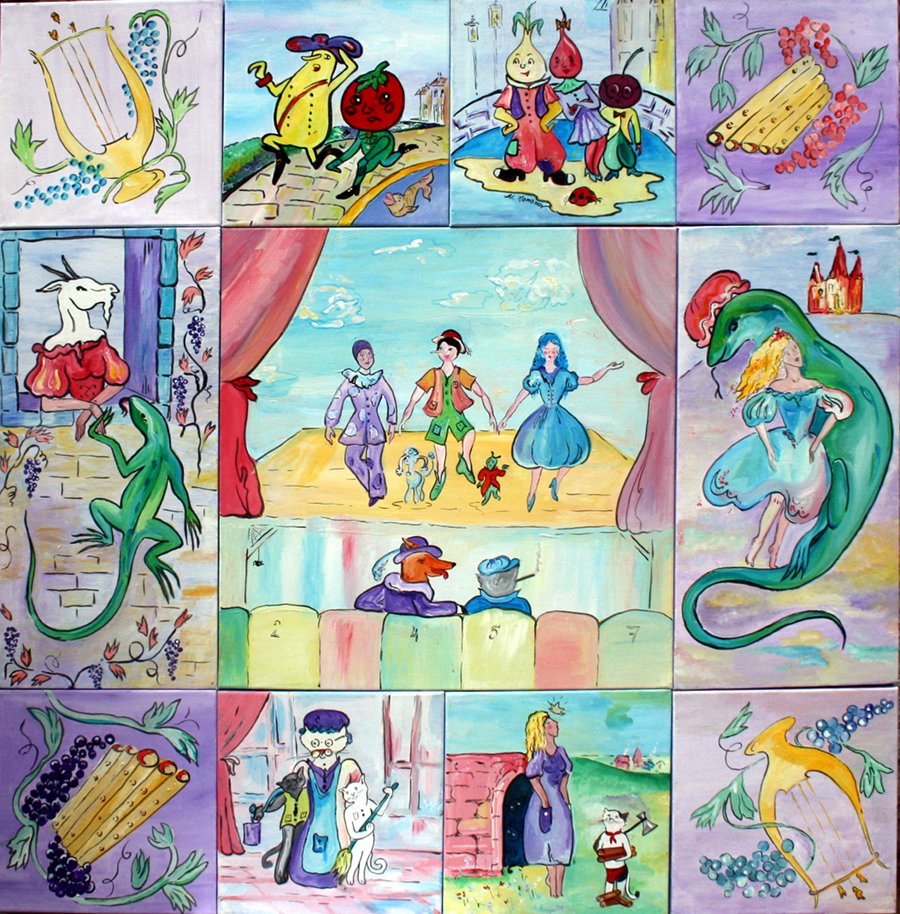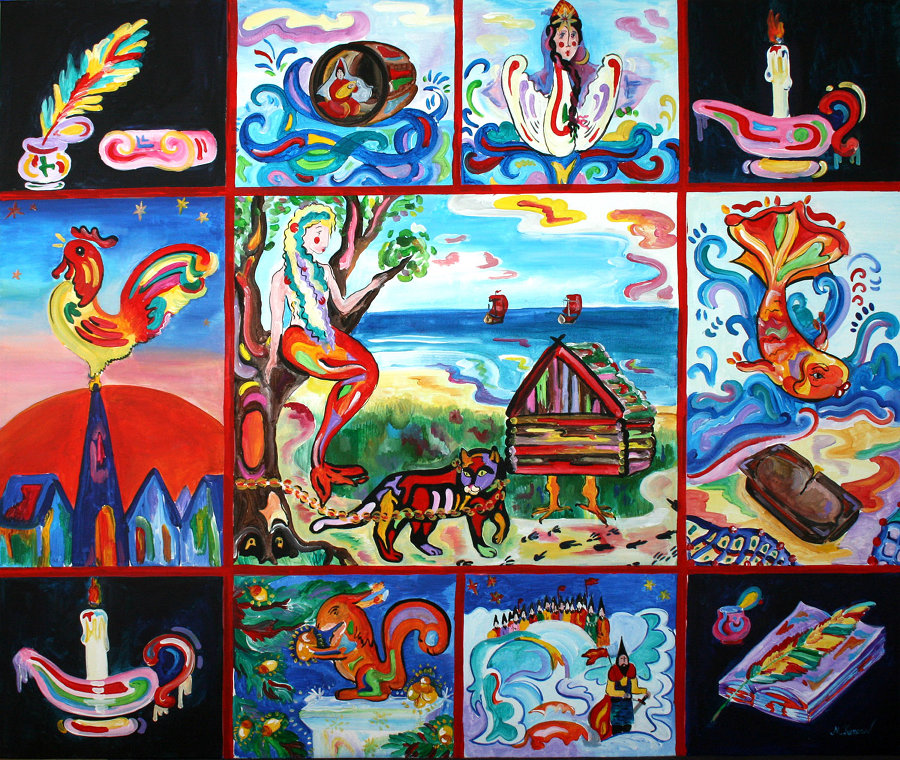Life Stimulus
In 2011, Maria had invented a project that helps
children in hospitals, called Life Stimulus. In
it, a group of children under Maria's guidance
draw a series of pictures, usually based on local
fairytales and folklore. During these drawing
sessions, Maria would ask everyone to try to project
their positive emotions and optimism into the work as
much as possible. She would recount the details of
fairytales, explain how it could be captured with
vivid colours, and help stimulate the imagination
of the group. Once finished, the resulting pictures
are then assembled into one large painting, which is
subsequently donated to a hospital to be hung in their
children’s ward. This way, while the medical staff
focus completely on the physical path to recovery,
Maria tries to improve the spiritual and psychological
elements, where optimism and joy are a key to speeding
sick children's recovery.
Since 2011, the Life Stimulus project had been carried
out at the following locations:
Process
Results









History
Maria Kononov's grand-father, Vladimir Naidin, was a famous doctor, working in the Burdenko Institute of Neurosurgery in Moscow, Russia. As an exceptionally observant man, he recognized Maria's unusual talent when she was only three. He started collecting Maria's works, bringing the most favorite to his office. At first, they were simple pencil sketches. With time, Maria's paintings appeared on Dr. Naidin's office walls and, eventually, in the hallways of the institute.
As the collection grew, so did the influx of people wanting to see Maria's works. These included patients, doctors and nurses, and even people from the outside who had heard about the unusual “art show” in the hospital. To Dr. Naidin, this sudden fascination with art was totally unexpected. He analyzed this unusual reaction and came to an interesting conclusion. In hospitals, people are surrounded by a grim atmosphere, full of pain and suffering. But, by looking at Maria’s pictures, they were receiving positive emotions packed with optimism and hope. Apparently, pictures distracted from pain and, at times, even assisted patients in their recovery.
Despite her young age, Maria was becoming a recognized artist. Her paintings were shown at art exhibitions in many cities around the globe, such as London, Moscow, Paris, and so on. However, Maria was not satisfied and wanted to try out something different. Then, in 2010, after her grand-father had passed away, she had an idea. Maria decided to start making paintings that will support children in hospitals. Also, she had realized that the most interesting pictures can be made only with the help of other cheerful kids, because kids don't need words to express their positive emotions.
The first attempt was made in September 2010 in Moscow. Maria made pencil sketches of the Russian folk tales on a few small canvases and, under her guidance, a group of schoolchildren from Kazarnovsky School colored these fragments. Maria explained to them that the goal was to make the most colorful and joyous images. Therefore, while following Maria's pencil outlines, they were free to choose any color or even add new details. After finished fragments were assembled into a single large picture, the result was stunning – a huge canvas, filled with magical characters and enticing details. The picture was then presented formally to the Scientific Center of Children's Health in Moscow, where it was hung in the children's ward.
Soon, doctors started to report that little patients were spending hours scrutinizing the original work, looking at their favorite fairytale character, and discussing the stories behind them, smiling all the time. This news had motivated Maria to continue with her project in other places, taking themes for the new works from the local folklore. The same event was repeated in:
What next? Maria keeps on striving to bring smiles on children's faces around the world.